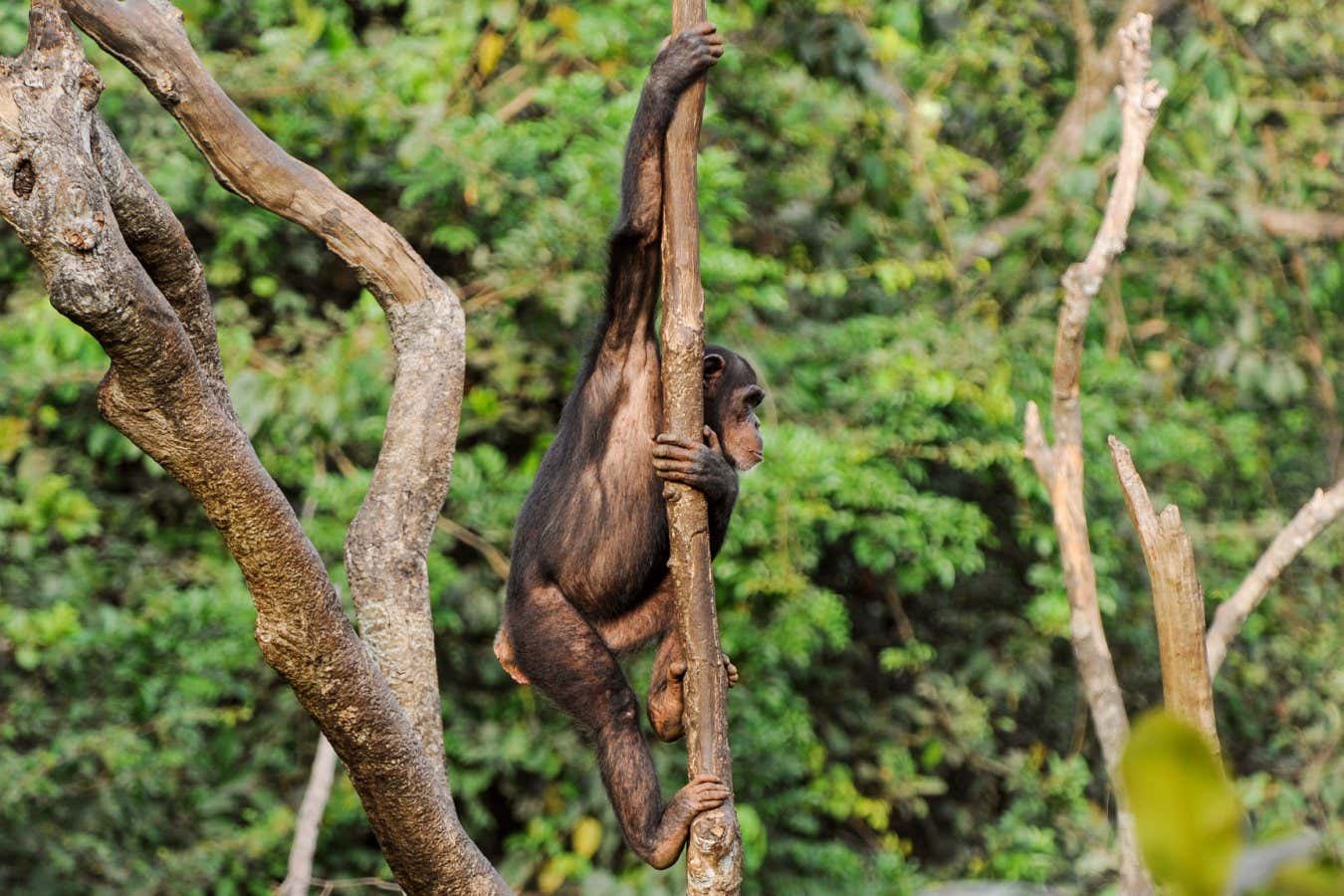Compared with monkeys, great apes have greater range of motion in their shoulders and elbows, which may help heavier primates climb down safely
By Christa Lesté-Lasserre
6 September 2023
Great apes such as chimpanzees have a wide range of movement in their shoulders
Joerg Boethling/Alamy
Humans’ advanced ability to throw things may have started with having evolved shoulders and elbows that stopped our ancestors from falling as they climbed down trees.
Bulkier and heavier than agile monkeys, humans and other great apes can be proficient upward climbers, but struggle to climb back down safely. To counteract the pull of gravity as primates’ body shapes evolved, arm joints became more flexible, allowing apes to stretch away from trees while climbing down so that their feet could brake more efficiently, says Nathaniel Dominy at Dartmouth College in New Hampshire.
“Going downward is much more challenging than going upward because you have to carefully dissipate that potential energy that would cause you to fall,” he says. “Animals that are heavier need to be much more careful, not only in the way that they move across the [forest] canopy, but also in descending down tall trees.”
Advertisement
Compared with monkeys, humans and other apes have greater range of motion in their shoulders, elbows and wrists. Scientists originally suspected that these differences evolved to help prevent falls in the heavier primates as they climbed up trees. But that idea has been hard to prove, since wild chimpanzees use their arms much like monkeys do, with similar shoulder and elbow angles, as they climb up.
Monkeys, like these mangabeys, have less mobility in their arm joints than great apes Luke Fannin/Dartmouth
Luke Fannin and Mary Joy, also at Dartmouth College, started wondering if it might have more to do with climbing downwards. Watching videos previously filmed by their research team, they realised that chimpanzees’ upward climbing style was markedly different from their downward style.
